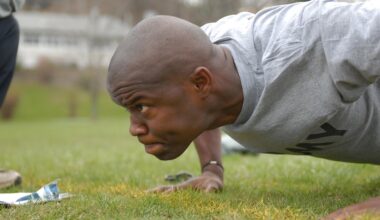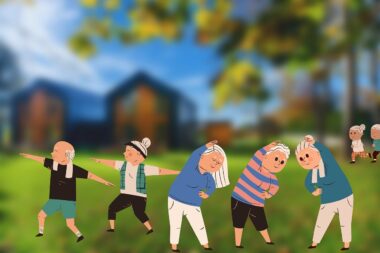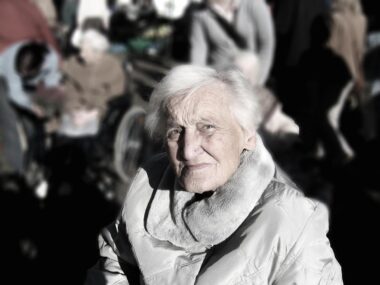Meeting the Challenge: Seniors Who Improved Mobility Through Exercise
Many seniors face mobility challenges that can significantly affect their quality of life. However, exercise has proven to be an effective pathway to regain strength and flexibility. Numerous success stories illustrate how dedicated seniors have enhanced their physical abilities through targeted exercise programs. One inspiring story comes from Mary, a 72-year-old who struggled with arthritis. Through a combination of strength training and gentle yoga, she not only improved her flexibility but also decreased her pain levels. Mary’s transformation highlights the importance of a tailored fitness plan that specifically addresses individual needs while considering any health conditions. Transitions may be tough, but engaging in regular exercise has led to a more fulfilling life for many seniors. Furthermore, joining community classes or group workouts can provide encouragement and accountability, fostering a supportive environment. In addition to physical improvements, participants often notice a boost in confidence and overall happiness. By sharing these success stories, we aim to inspire other seniors to take charge of their health and embrace fitness as a rewarding journey.
Another powerful story comes from Frank, a 68-year-old veteran who experienced a major decline after knee surgery. With determination and the help of his physical therapist, he began incorporating resistance training into his routine. Initially challenging, he focused on small milestones that built upon one another. Along with strength exercises, Frank joined a local walking group to enhance his cardiovascular health. The companionship of his peers motivated him to push through difficult days, ultimately leading to a remarkable recovery. Family members and friends noticed the change, and Frank became an inspiration in his community. His results underscore the significance of setting realistic goals and the necessity of having a strong support network. As others witnessed Frank’s journey, many decided to start their fitness journeys as well. Frank emphasizes that no matter the starting point, consistency and perseverance can yield incredible results. Individual progress may vary, but each small victory contributes to a larger transformation. The success stories of individuals like Frank reveal that it is never too late to improve health and mobility, making exercise a vital component of senior living.
Community Support and Group Classes
Joining community fitness classes is another excellent way for seniors to enhance mobility while enjoying social interaction. Many organizations have recognized the need for tailored workout sessions designed specifically for older adults. These programs, which often include chair aerobics or stretching classes, are well-suited to those with varying physical limitations. Participants benefit not only from the structured format but also from meeting others in similar situations, which promotes camaraderie. A prime example is the Silver Sneakers program, which makes fitness accessible to seniors by collaborating with local gyms and community centers. Many seniors who joined these classes report feeling motivated and energized, encouraging each other along the way. The enthusiasm and bonding in group classes foster a unique environment. For individuals like Jane, a 75-year-old grandmother, attending these classes became a highlight of her week. Through support and encouragement, she found greater strength and mobility than she thought possible. These community efforts demonstrate that connection and motivation can come through collective experiences, creating success stories that inspire others to take that initial step towards fitness.
Yoga is another powerful tool for seniors wishing to enhance mobility safely. The gentle movements and focus on breath can significantly improve flexibility and balance. For example, Henry, a 74-year-old yoga enthusiast, began practicing after suffering from severe back pain. Under the guidance of a qualified instructor, he adapted poses to accommodate his needs. Over time, his pain subsided and he rediscovered activities he once enjoyed, such as gardening. While attending classes, he formed lasting friendships with fellow participants who faced similar mobility issues. These shared experiences strengthened their resolve to continue improving together. Henry often shares his journey with others, encouraging them to explore yoga as a means of regaining mobility. As more seniors learn about the benefits of yoga, studios have started to offer tailored classes to better accommodate older adults. Evidence-based research continues to support yoga’s positive impact on seniors’ overall health. Those pursuing this path often find it to be a holistic approach to improving physical and emotional well-being, making it a valuable resource for anyone looking to enhance their mobility gently.
Overcoming Fear of Injury
It’s common for seniors to harbor concerns about potential injury when beginning an exercise routine. However, overcoming these fears is essential for improved mobility. Richard, an active 70-year-old, was initially hesitant to start exercise due to fears of falling and exacerbating previous injuries. With professional guidance, he learned to modify exercises that matched his pace and ability while ensuring safety. Regularly visiting a fitness professional helped him develop a routine focused on balance and strength. Slowly, Richard became more confident in his abilities, leading to greater independence in daily activities. Overcoming the fear of injury is a significant hurdle, but education is key. Many seniors benefit from working with trained professionals who empower them by establishing proper techniques. Learning how to engage in different exercises safely mitigates the risk of injury. Furthermore, seniors can explore various options tailored for their unique needs while enjoying newfound confidence. Richard’s success demonstrates that with perseverance and the right guidance, fears can be conquered, paving the way for lasting improvements in mobility and overall quality of life.
Nutrition also plays a vital role in supporting mobility and recovery. A balanced diet rich in essential nutrients helps seniors maintain energy levels for their fitness routines. For instance, Barbara, a 69-year-old woman, realized that incorporating more proteins and calcium into her meals aided her bone health. Her culinary journey introduced her to delicious recipes specially designed to promote overall wellness. Barbara began utilizing her cooking as a fun activity that paired perfectly with her exercise routine. She often shares her favorite nutritious recipes with friends at her local community center. Not only did the improvements in nutrition positively impact her mobility, but they also fostered social interactions through cooking workshops. Barbara encourages others to view nutrition as an essential component of their fitness regimen. Understanding the role of nutrition enables seniors to make smarter food choices that complement their exercise habits. As awareness spreads about nutrition’s impact on mobility, more seniors are committed to healthy eating as part of their overall fitness journey.
A Personal Responsibility to Maintain Mobility
Ultimately, seniors have the power to take charge of their health through their commitment to regular exercise and nutrition. Several motivating stories confirm that improved mobility leads not only to physical enhancements but also a significant increase in self-esteem. Phil, a 76-year-old who once felt hopeless about his declining mobility, decided to invest in himself by joining a fitness program that fit his interests and abilities. Gradually, he regained his independence and even ventured on outdoor hiking trips with friends. The motivation that stemmed from his fitness journey became contagious, sparking inspiration in those around him. By taking this personal responsibility to maintain their mobility and overall health, seniors not only improve their lives but also influence others positively. Roles can evolve as advocates and leaders in their communities, encouraging their peers to participate in physical activities and healthier lifestyle choices. Ultimately, the success stories of seniors overcoming mobility obstacles through exercise continue to inspire a movement focused on prevention and wellness, fostering overall well-being in their later years.
Encouraging trends show that with determination, seniors can defy age-related limitations. By hearing inspiring stories of individuals who have taken charge of their lives, more people can look toward their own journeys. Community-centered fitness programs, supportive class environments, and balanced nutrition all present crucial factors for success. Adopting active lifestyles fosters not only mobility improvements but a profound sense of connection and companionship among participants. Every unique story of successful mobility enhancement gets amplified by the sheer determination shown. They remind us all that age is merely a number. Commitment and persistence serve as powerful tools that propel seniors towards improved mobility, allowing them to engage wholeheartedly in daily life. As public awareness grows, more seniors will continue to find their niche within the fitness world. Those who believe they cannot make a change will be motivated by success stories like those of Frank, Mary, and others who represent the powerful impact that exercise can have. Every step taken becomes a testament that it’s never too late to invest in personal health, reinforcing that with the right guidance, any senior can improve their mobility significantly.





